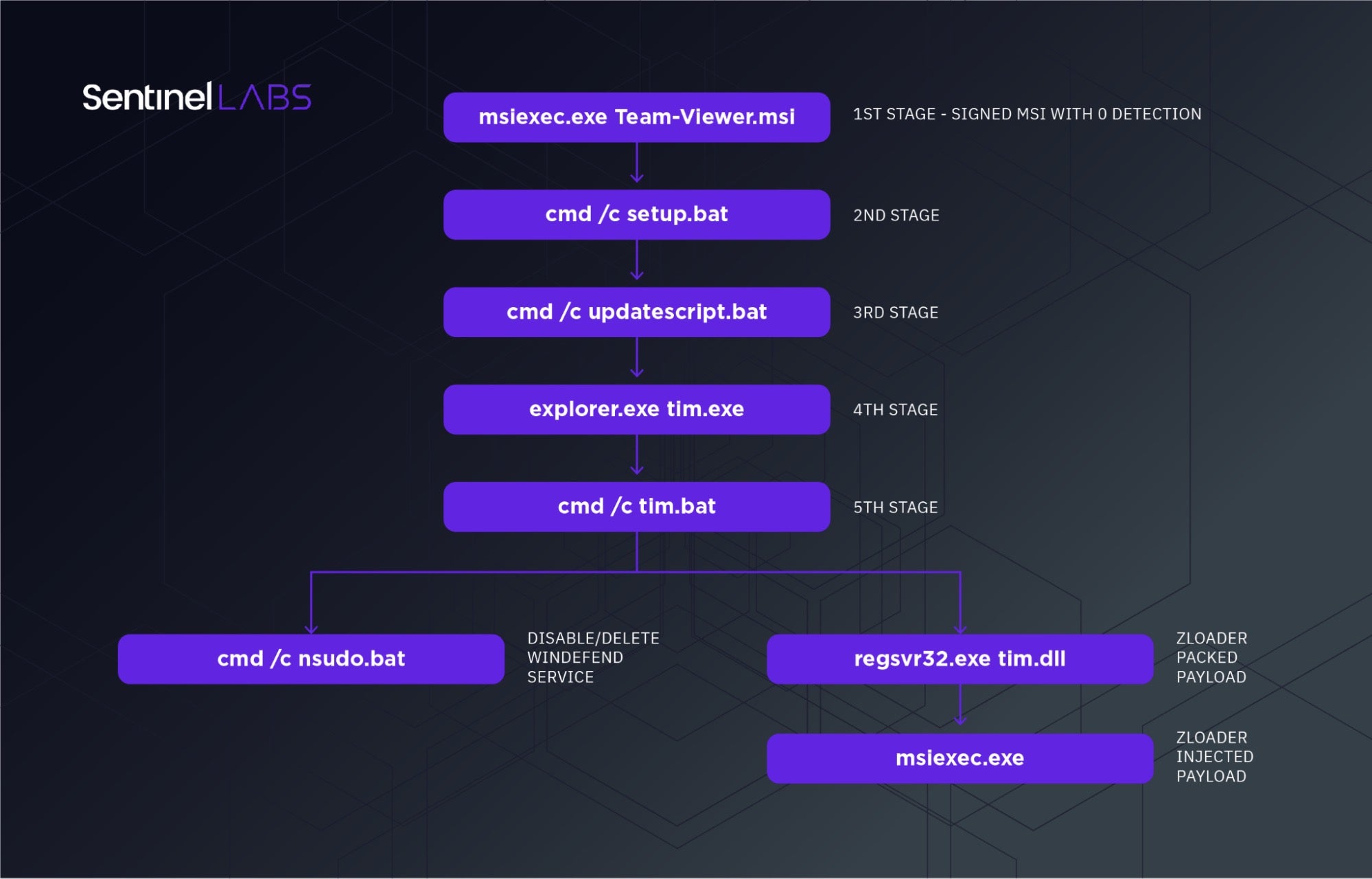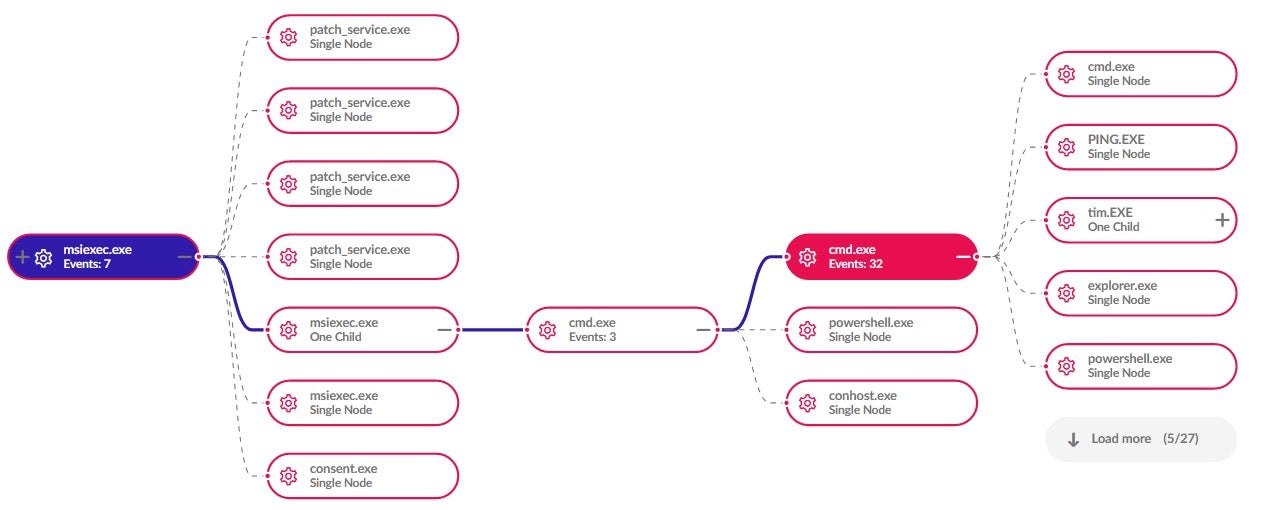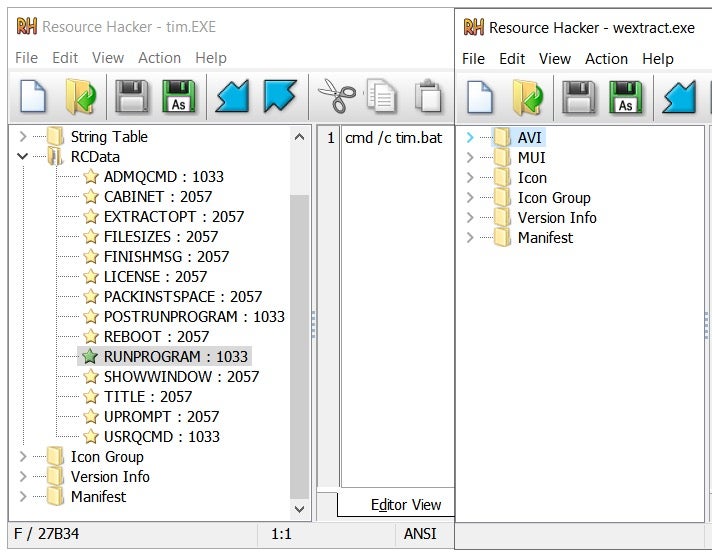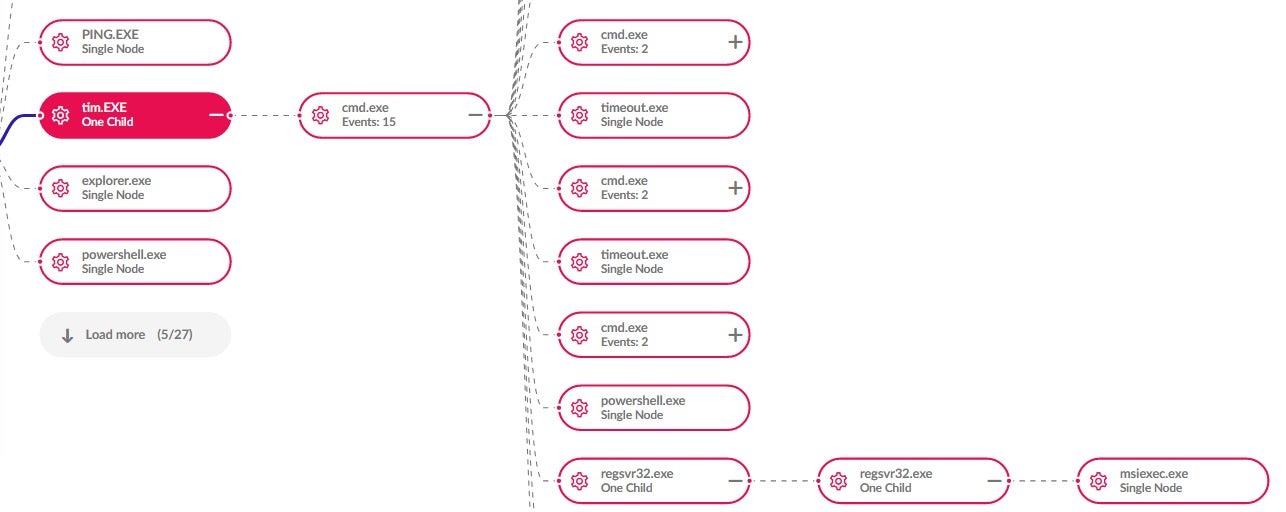Hide and Seek | New Zloader Infection Chain Comes With Improved Stealth and Evasion Mechanisms
By Antonio Pirozzi and Antonio Cocomazzi

Executive Summary
- New ZLoader campaign has a stealthier distribution mechanism which deploys a signed dropper with lower rates of detection.
- The campaign primarily targets users of Australian and German banking institutions.
- The new infection chain implements a stager which disables all Windows Defender modules.
- The threat actor uses a backdoored version of the Windows utility
wextract.exeto embed the ZLoader payload and lower the chance of detection. - SentinelLabs identified the entire infrastructure of the ‘Tim’ botnet, composed of more than 350 recently-registered C2 domains.
Introduction
ZLoader (also known as Terdot) was first discovered in 2016 and is a fork of the infamous Zeus banking trojan. It is still under active development. A multitude of different versions have appeared since December 2019, with an average frequency of 1-2 new versions released each week.
ZLoader is a typical banking trojan which implements web injection to steal cookies, passwords and any sensitive information. It attacks users of financial institutions all over the world and has also been used to deliver ransomware families like Egregor and Ryuk. It also provides backdoor capabilities and acts as a generic loader to deliver other forms of malware. Newer versions implement a VNC module which permits users to open a hidden channel that gives the operators remote access to victim systems. ZLoader relies primarily on dynamic data exchange (DDE) and macro obfuscation to deliver the final payload through crafted documents.
A recent evolution of the infection chain included the dynamic creation of agents, which download the payload from a remote server. The new infection chain observed by SentinelLabs demonstrates a higher level of stealth by disabling Windows Defender and relying on living-off-the-land binaries and scripts (LOLBAS) in order to evade detection. During our investigation, we were also able to map all the new ZLoader C2 infrastructure related to the ‘Tim’ botnet and identify the scope of the campaign and its objectives, which primarily involved stealing bank credentials from customers of European banks.

Technical Analysis
The malware is downloaded from a Google advertisement published through Google Adwords. In this campaign, the attackers use an indirect way to compromise victims instead of using the classic approach of compromising the victims directly, such as by phishing.
We observed the following pattern of activity that leads to infection:
- The user performs a search on www.google.com to find a website to download the required software from; in our case, we observed a search for “team viewer download”.
- The user clicks on an advertisement shown by Google and is redirected to the fake TeamViewer site under the attacker’s control.
- The user is tricked into downloading the fake software in a signed MSI format.
Once the user clicks on the advertisement, it will redirect through the aclk page. This redirect demonstrates the attackers usage of Google Adwords to gain traffic:
hxxps://www.google.com/aclk?sa=L&ai=DChcSEwiMusngi8_yAhVbbm8EHYpXDh0YABABGgJqZg&ae=2&sig=AOD64_05er1E772xSHdHTQn_3lAIdsmPxA&q&adurl&ved=2ahUKEwjV8cHgi8_yAhXPaM0KHTCBDeAQ0Qx6BAgCEAE&dct=1
After further navigation (and redirects), the malicious Team-Viewer.msi is downloaded from the final URL hxxps://team-viewer.site/download/Team-Viewer.msi.
The downloaded file is a fake TeamViewer installer signed on 2021-08-23 10:07:00. It appears that the cybercriminals managed to obtain a valid certificate issued by Flyintellect Inc, a Software company in Brampton, Canada. The company was registered on 29th June 2021, suggesting that the threat actor possibly registered the company for the purpose of obtaining those certificates.
Pivoting from this certificate, we were able to spot other samples
signed with the same certificate. These other samples suggest that the
attackers had multiple campaigns ongoing beyond TeamViewer and which
included fakes such as JavaPlug-in.mis, Zoom.mis, and discord.msi.
At the time of writing, these four samples have no detections on VirusTotal (a complete list of IoCs can be found in the full report).
New Zloader Infection Chain Bypass Defences
The .msi file is the first stage dropper which runs an installation wizard. It creates random legitimate files in the directory C:\Program Files (x86)\Sun Technology Network\Oracle Java SE. Once the folder has been created, it will drop the setup.bat file, triggering the initial infection chain by executing cmd.exe /c setup.bat.
This initiates the second stage of the infection chain, downloading the dropper updatescript.bat through the PowerShell cmdlet Invoke-WebRequest, from hxxps://websekir.com/g00glbat/index/processingSetRequestBat/?servername=msi. The dropper then executes the third stage with the command cmd /c updatescript.bat.
The third stage dropper contains most of the logic to impair the
defenses of the machine. It also drops the fourth stage using a stealthy
execution technique. At first, it disables all the Windows Defender
modules through the PowerShell cmdlet Set-MpPreference. It then adds exclusions, such as regsvr32, *.exe, *.dll, with the cmdlet Add-MpPreference to hide all the components of the malware from Windows Defender.
At this point the fourth stage dropper is downloaded from the URL hxxps://pornofilmspremium.com/tim.EXE and saved as tim.exe. The execution of tim.exe is done through the LOLBAS command explorer.exe tim.exe. This allows the attacker to break the parent/child correlation often used by EDRs for detection.

The tim.exe binary is a backdoored version of the Windows utility wextract.exe.
This backdoored version contains extra embedded resources with names
like “RUNPROGRAM”, “REBOOT”, and “POSTRUNPROGRAM”, among others.

tim.exe binary (left) and legit wextract.exe(right)
This backdoored version contains additional code for creating a new malicious batch file with the name tim.bat. It is placed in a temporary directory retrieved with the Win32 function GetTempPath(). It retrieves the content of the resource “RUNPROGRAM” (containing the string value cmd /c tim.bat) and uses it as the command line parameter for the CreateProcess() Win32 function.
The tim.bat file is a very short script that downloads the final ZLoader DLL payload with the name tim.dll from the URL hxxps://pornofilmspremium.com/tim.dll and executes it through the LOLBAS command regsvr32 tim.dll. This allows the attackers to proxy the execution of the DLL through a signed binary by Microsoft.
This dropper downloads the script nsudo.bat from hxxps://pornofilmspremium.com/nsudo.bat and runs asynchronously in parallel with the execution of tim.dll. The script aims to further impair defenses of the machine.
Privilege Escalation and Defense Evasion
The nsudo.bat script performs multiple operations with the goal of elevating privileges on the system and impairing defenses.
At first, it checks if the current context of execution is privileged
by verifying the access to the SYSTEM hive. This is done through %SYSTEMROOT%\system32\cacls.exe %SYSTEMROOT%\system32\config\system. If the process in which it runs has no access on that hive it will jump to the label :UACPrompt.
This part of the script implements an auto elevation VBScript that aims to run an elevated process in order to make system changes. The snippet of the script in charge of the UACPrompt feature is as follows:
:UACPrompt
echo Set UAC = CreateObject^("Shell.Application"^) > "%temp%\getadmin.vbs"
set params = %*:"="
echo UAC.ShellExecute "cmd.exe", "/c %~s0 %params%", "", "runas", 1 >> "%temp%\getadmin.vbs"
"%temp%\getadmin.vbs"
del "%temp%\getadmin.vbs"
exit /B
This snippet creates the VBScript getadmin.vbs, runs it and deletes it. Using a VBScript eases the interaction with COM objects. In this case, it instantiates a Shell.Application object and calls the function ShellExecute() to trigger the UAC elevation and the interaction with the AppInfo service.
Once the elevation occurs the script is run with elevated privileges.
At this point, the script performs the steps to disable Windows
Defender. It does this through a software utility called NSudo renamed as javase.exe, which is downloaded from the URL hxxps://pornofilmspremium.com/javase.exe. The attacker leverages this utility in order to spawn a process with “TrustedInstaller” privileges. This can be abused by the attacker to disable the Windows Defender service even if it runs as a Protected Process Light.
The script downloads the file autorun100.bat from and places it in the startup folder %USERPROFILE%\AppData\Roaming\Microsoft\Windows\Start Menu\Programs\Startup. This script ensures that the WinDefend service is deleted at the next boot through the utility NSudo.
The nsudo.bat script also completely disables UAC by setting the following registry key to 0:
HKEY_LOCAL_MACHINE\SOFTWARE\Microsoft\Windows\CurrentVersion\Policies\System\EnableLUA
In order to have these changes take effect, the computer is forced to restart. The nsudo.bat script does this with shutdown.exe /r /f /t 00. At this point, the attack chain of the script nsudo.bat is complete.
ZLoader Payload Execution Chain
The tim.dll is the main ZLoader payload that
encapsulates the unpacking logic and adds persistence. It is executed
through the system signed binary regsvr32.exe.
It first creates a directory with a random name inside %APPDATA% and then creates a copy of itself in the newly created directory. It then adds a new registry key in HKEY_CURRENT_USER\Software\Microsoft\Windows\CurrentVersion\Run.
The registry key value contains the command line of the malicious
process to spawn on user logon. This ensures that the attacker’s implant
survives machine reboots. The DLL execution also relies on the regsvr32 binary. This is an example of the registry key created on a single run of the sample:
HKEY_CURRENT_USER\Software\Microsoft\Windows\CurrentVersion\Run\Iwalcacvalue: regsvr32.exe /s C:\Users\[REDACTED]\AppData\Roaming\Kyubt\otcyovw.dll
Then it starts the unpacking by leveraging a process injection technique known as Thread Hijacking. It contains a small variation but essentially uses the same pattern of Win32 API calls used for Thread Hijacking:
VirtualAllocEx() -> WriteProcessMemory() -> GetThreadContext() -> SetThreadContext() -> ResumeThread()
It first creates a new process as a host for the unpacked DLL, and for this sample it uses a new instance of msiexec.exe.
Then it allocates and writes 2 RWX memory regions inside the target
process. One contains the unpacked version of the DLL XOR’ed with a key;
the second, contains some shellcode to decrypt the DLL and jump to the
entry point.

Once the memory is written in the remote process it sets the new
thread context EIP to point to the unpacking routine shellcode and
resumes the main thread of msiexec. This is how the hijacking of the main thread occurs. The unpacked DLL is extracted from the memory of msiexec.exe process by dumping the memory address used in the first WriteProcessMemory() call.
We have compared the unpacked DLL with the recent ZLoader payloads and found a similarity score of 92.62%.

Analyzing The New Zloader C2 Infrastructure
The analyzed sample belongs to the ‘Tim’ Botnet as defined in the malware configuration. Some of the embedded C2s (the full list can be found in the IoC section of the full report) are also shared by the googleaktualizacija ZLoader botnet.
One of the C2s dumped from the infected machine, mjwougyhwlgewbajxbnn[.]com, used to resolve to 194.58.108[.]89 until the 25th of August 2021. As of the 26th of August, however, it points to 195.24.66[.]70.
The IP 194.58.108[.]89 belongs to ASN 48287 – RU-CENTER
and seems to deploy many different domains – 350 at the time of writing –
forming the new ZLoader infrastructure. Some domains implement the gate.php
component, which is a fingerprint of the ZLoader botnet. We noticed
during our investigation that all the domains were registered from April
to Aug 2021, and they switched to the new IP (195.24.66[.]70) on the 26th of August.
A Targeted Campaign: AU And DE Financial Institutions
The new ZLoader campaign is targeted. The final payload has a list of embedded AU and DE domains, and contains some strings with wildcards used by the malware to intercept specific users’ web requests to bank portals.
@https://*commerzbank.de*
@https://*.de/*/entry*
@https://*.de/banking-*/portal?*
@https://*.de/banking-*/portal;*
@https://*.de/portal/portal*
@https://*.de/privatkunden/*
@https://*.de*abmelden*
@https://*.de/de/home*
@https://*.de/en/home*
@https://*.de/fi/home*
@https://*banking.sparda.de*
@https://*banking.sparda-*
@https://*banking.sparda.de/wps/loggedout.jsp
@https://*meine.deutsche-bank.de/trxm/db*
@https://*banking.berliner-bank.de/trxm*
@https://*meine.norisbank.de/trxm/noris*
@https://*targobank.de*
@https://banking4.anz.com/IBAU/BANKAWAY*
@https://banking.westpac.com.au/*
@https://www1.my.commbank.com.au/netbank/Portfolio/Home/*
@https://ibanking.stgeorge.com.au/ibank/*
@https://ibanking.banksa.com.au/ibank/*
@https://ibanking.bankofmelbourne.com.au/ibank/*
@https://online.macquarie.com.au/*
@https://ob.cua.com.au/ib/*
@https://banking.bendigobank.com.au/banking*
@https://internetbanking.suncorpbank.com.au/*
@https://www.ing.com.au/securebanking/*
@https://ib.nab.com.au/*
@https://online.beyondbank.com.au/*
@https://ib.greater.com.au*
@www.independentreserve.com*
@www.coinspot.com.au*
@https://auth.btcmarkets.net/*
From our analysis of the communication patterns related to mjwougyhwlgewbajxbn[.]com, we were able to map most of the source traffic used by the operators of the botnet.
The pornofilmspremium[.]com domain delivers the tim.exe
component. The domain was registered on 2021-07-19 (Location RU, ASN:
REG RU 197695) and is associated by the community with ZLoader [1, 2]. The email address neo@kosai-city[.]com was used to register this domain and a number of others, as detailed in the full report.
Conclusion
The attack chain analyzed in this research shows how the complexity of the attack has grown in order to reach a higher level of stealthiness. The first stage dropper has been changed from the classic malicious document to a stealthy, signed MSI payload. It uses backdoored binaries and a series of LOLBAS to impair defenses and proxy the execution of their payloads.
This is the first time we have observed this attack chain in a ZLoader campaign. At the time of writing, we have no evidence that the delivery chain has been implemented by a specific affiliate or if it was provided by the main operator. SentinelLabs continues to monitor this threat in order to track further activity.
Indicators of Compromise
For a full list of IoCS see the full report.
Read the Full Report
The main source of this article is at the following link --> https://www.sentinelone.com/labs/hide-and-seek-new-zloader-infection-chain-comes-with-improved-stealth-and-evasion-mechanisms/